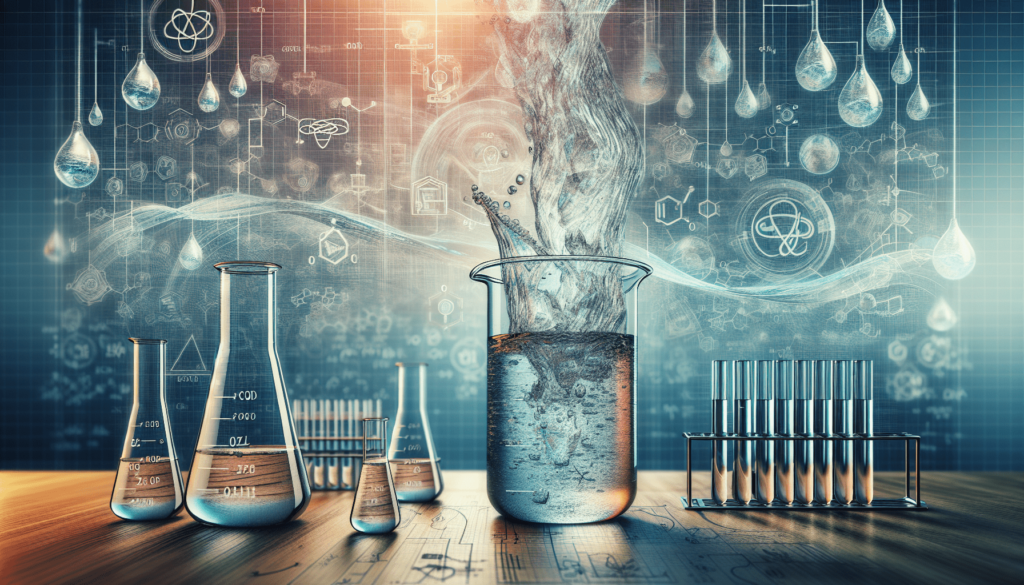Have you ever wondered how water treatment facilities manage to clean our water so effectively? At the heart of this process are two critical measurements: BOD (Biochemical Oxygen Demand) and COD (Chemical Oxygen Demand). These are essential in determining the quality of water and its suitability for use. Understanding the difference between these two can shed light on how wastewater is treated and the importance of monitoring water quality.
Understanding BOD (Biochemical Oxygen Demand)
Biochemical Oxygen Demand, or BOD, is an essential metric in evaluating water quality. It measures the amount of oxygen that microorganisms require to break down organic matter in water. A higher BOD indicates a greater amount of organic pollution, suggesting a higher level of decomposition activity needed, which can be detrimental to aquatic life.
How BOD is Measured
BOD is generally measured over five days at 20 degrees Celsius, which is why you often see it referred to as BOD5. By assessing the oxygen levels consumed by bacteria to decompose organic matter, you can estimate the level of biodegradable organic matter present.
Importance of BOD in Water Treatment
A higher BOD suggests significant organic pollution, which can lead to oxygen depletion in water bodies. This depletion can harm aquatic life, leading to a need for more sophisticated water treatment interventions. Monitoring BOD helps in the design and operation of sewage treatment plants and influences the effectiveness and efficiency of these systems.
Delving into COD (Chemical Oxygen Demand)
Chemical Oxygen Demand (COD) is another crucial metric when assessing water quality. It measures the total quantity of oxygen required to oxidize both organic and inorganic compounds in water. COD is a broader term compared to BOD because it accounts for more than just the biodegradable organic matter.
How COD is Measured
Unlike BOD, COD is measured using a chemical oxidant in a closed environment. This process is faster and can deliver results within a few hours. The measurement represents the total pollution that can be oxidized chemically, making COD a comprehensive indicator of water quality.
Importance of COD in Water Treatment
COD provides a quick snapshot of the organic load in water, enabling faster decision-making regarding water treatment processes. It is particularly useful for industrial applications where the presence of inorganic pollutants is high. This helps in choosing suitable treatment methods to efficiently remove pollutants and protect aquatic life.

Comparing BOD and COD
Both BOD and COD are indicators of water pollution, but they serve slightly different roles and are measured differently. Understanding these differences can help in selecting appropriate wastewater treatment methods and assessing environmental impact.
Differences in Measurement
| Aspect | BOD | COD |
|---|---|---|
| Measurement Time | Typically 5 days | Typically a few hours |
| Type of Compounds | Biodegradable organic matter | Both organic and inorganic matter |
| Method | Biological decomposition | Chemical oxidation |
Differences in Application
While BOD focuses on the biodegradable fraction of organic matter, COD provides an overall measure of potential pollution. This makes COD helpful in a broader range of applications, especially those involving non-biodegradable pollutants.
Relation and Ratio
Typically, COD values are higher than BOD values because COD includes compounds that do not degrade biologically. The BOD/COD ratio is often used to assess the nature of organic substances present, with a higher ratio indicating a more biodegradable waste.
Practical Implications in Water Treatment
Both BOD and COD are integral to understanding the characteristics of wastewater and influencing the selection of appropriate treatment technologies. They guide the treatment process from initial assessment to final purification.
BOD in Wastewater Treatment
In wastewater treatment plants, BOD is a vital parameter because it helps in evaluating the organic pollution level and efficiency of treatment processes. By monitoring BOD levels, treatment facilities can adapt their biological treatment processes, such as aeration and digestion, to optimize efficacy.
COD’s Role in Treatment Processes
For industrial effluents that may contain non-biodegradable substances, COD measurement is crucial. It helps in determining the need for chemical treatments or physical filtration methods that target both organic and inorganic compounds. This broader approach allows for comprehensive removal of pollutants, ensuring water safety.

Challenges and Improvements in Measuring BOD and COD
While essential, both BOD and COD measurements come with specific challenges. Accuracy, time consumption for BOD, and chemical handling for COD are some of the typical struggles faced by water analysts.
Challenges in BOD Measurement
The primary challenge with BOD is the time it takes to get results, which is not ideal for quick decision-making. Additionally, it can be susceptible to variability due to environmental factors and microbial activity.
Challenges in COD Measurement
For COD, the main concern lies in the handling and disposal of hazardous chemicals used during measurement. Despite providing quicker results than BOD, it does not differentiate between biodegradable and non-biodegradable organic matter.
Modern Improvements and Innovations
Technological advancements continue to improve the accuracy and efficiency of both BOD and COD measurements. Automated systems and sophisticated sensors are being integrated to provide real-time data and reduce reliance on traditional labor-intensive methods.
The Environmental Impact of BOD and COD
Understanding BOD and COD goes beyond water treatment—it extends to their environmental implications. These measures impact aquatic life and the overall health of water bodies.
Implications on Aquatic Life
High BOD levels can lead to hypoxia, where low oxygen conditions threaten fish and other aquatic organisms. Likewise, elevated COD indicates high pollution, which can lead to biodiversity loss and ecosystem imbalance.
Role in Environmental Regulation
Both BOD and COD are regulated by environmental agencies to ensure water quality. Standards are set, dictating allowable levels in discharged water to mitigate harm to natural water bodies.
Conclusion
Grasping the difference between BOD and COD is fundamental for anyone interested in environmental science, water treatment, or industrial water management. Each plays a vital role in monitoring and improving water quality, although they serve slightly different purposes. By understanding their unique attributes, you can appreciate the complexity and importance of maintaining safe and sustainable water systems. Monitoring and refining these measurements will continue to be crucial as we aim for a cleaner, healthier environment.
Do questions remain about how these processes affect your water supply and environmental well-being? Exploring this field further could reveal deeper insights into the challenges and triumphs of water management.
